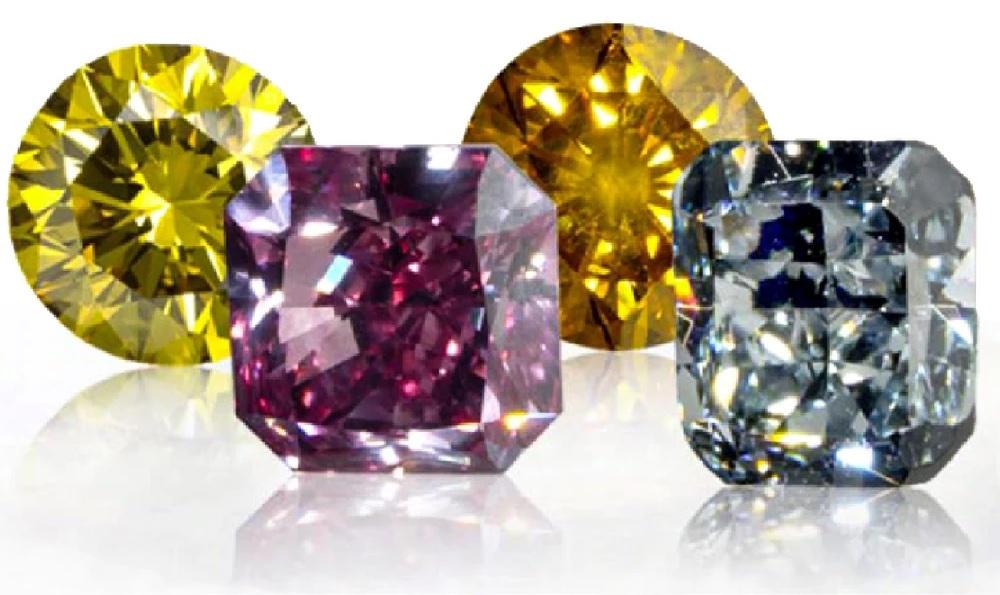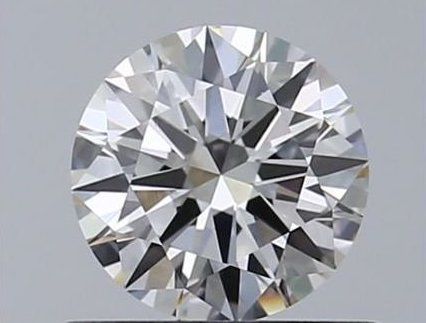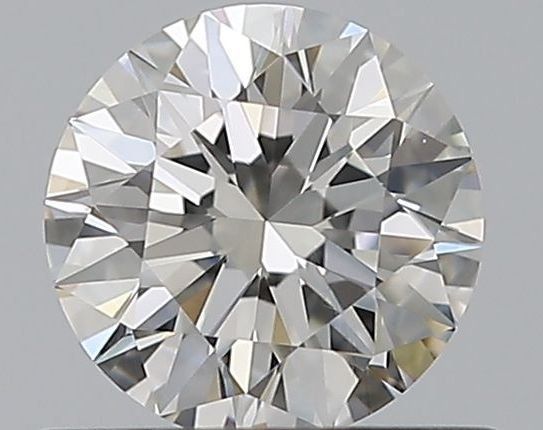H Color Diamonds: The Ultimate Buying Guide
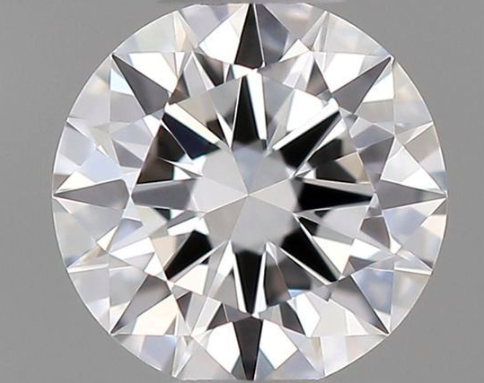
H-color diamonds are a great choice for your engagement ring or diamond jewelry piece. Keep reading to get expert tips on how to choose the right H-color diamond.
Introduction To Diamond Color
The Global Standard: The 4Cs
Many systems have been developed throughout history in an attempt to classify diamonds. Many of these frameworks were imprecise and subjective.
With technological advancements came new methods. And around 1947, the Gemological Institute of America published educational material describing a comprehensive approach that observed and graded 4 diamond aspects: Color, Clarity, Cut, and Carat weight. This came to be known as the 4Cs of Diamonds, and today it’s been adopted worldwide. It is the global standard, and multiple gemological laboratories create diamond reports following GIA’s original framework.
Learn More About The 4Cs of Diamonds
How Is Diamond Color Graded?

Color is a natural feature in both Earth-Grown and Lab-Grown diamonds. It is a result of a diamond’s formation process where it interacts with Nitrogen, the element responsible for adding a yellow tint.
In fact, yellow is the most common color a diamond can have. This is why it’s the primary reference for the Diamond Color Scale. This scale measures the intensity of yellow saturation. It starts with the letter D and goes down to Z. The D grade is entirely transparent and has no yellow color presence at all. From there, the yellow tint increases with Z-grade diamonds being visibly yellow.
The letter grades are divided into five groups that go from Colorless to Faint Yellow.
Diamonds are observed under magnification with special gemological tools to determine which color grade they receive. The grade is stated in the laboratory report. At Ritani, all our Earth-Grown diamonds come with a GIA report, and our Lab-Grown diamonds come with reports from reputable agencies such as the GIA, IGI, and GCAL.
The Near-Colorless H Grade
The Near-Colorless group includes color grades G-H-I-J. The common characteristic of these grades is they appear colorless to the naked eye. Still, some degree of yellow can be detected with either the aid of magnification or upon close inspection.
It’s fair to say most engagement rings feature a Near-Colorless center diamond. They are the best-selling Color group, offering a significant price reduction compared to Colorless grades.
H color-graded diamonds have a white appearance and can look colorless for the untrained eye. Below is a D (completely colorless) diamond compared to an H-color diamond.

3 Reasons To Buy An H Color Diamond
1. H Color Diamonds Offer Great Value
H graded diamonds are an excellent option. With an H diamond, you get a white-looking stone for way less than the cost of a D or Colorless grade.
2. You're Buying a Near-Colorless Diamond
Don’t forget an H grade is part of the Near-Colorless group. This is still a gorgeous looking stone that will look colorless. Don’t feel the pressure to invest most of your budget in a perfectly colorless stone, Near-Colorless grades like the H are very desirable.
3. They Look Stunning With Any Metal Color
H Color diamonds are in that sweet spot of being white enough to look fabulous when set in white metals and having a pale warm undertone that also pairs well with yellow gold.
The Best Diamond Shapes For H Color Diamonds
You may have a vision of what your dream engagement ring looks like. And you’re probably already leaning towards a particular shape. If you already have a favorite cut, that is the best one to get. But, if you’re open to suggestions, here are our recommendations:
Round brilliant cut diamonds create a lot of sparkle and fire. The high reflections make it difficult to notice any hint of color, which can make your H-color diamond look even whiter.
Try other brilliant shapes. The oval, pear, and marquise cuts also have a brilliant facet pattern.
Engagement Ring Styles For H Color Diamonds
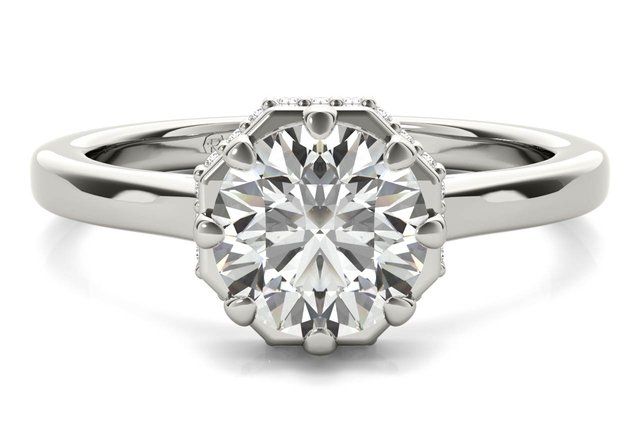
White gold or Platinum has a white luster that enhances the white appearance of an H color diamond. The unique setting of our Eight-prong Solitaire Diamond Engagement Ring above features an octagonal border that will reflect more white light.
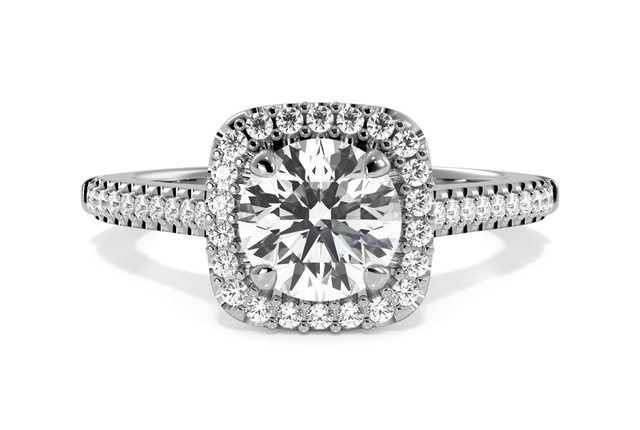
If you want a little bit more shimmer, a halo is a beautiful way to add brilliance. The melee diamonds in our Dainty Diamond Halo Engagement Ring are of at least an H color grade, so you can be sure they will not create any color contrast with your center stone.
H vs. I And Other Color Grades
The H color grade offers excellent value, but it is still more expensive than the I and J grades, which are also part of the Near-Colorless category.
The color difference between an H and an I color diamond is almost imperceptible. This is especially true when comparing two Round Brilliant cuts.
When comparing H and I color diamonds with a Step Cut shape, the slight variation in color saturation might be easier to stop. This is because their large top facet (also known as Window) allows for a clear view into the diamond. Less brilliance also makes it easier to notice color.
Remember, you should only compare diamond grades with each other when they are set in the same metal color, have similar clarity grades, and bear the same shape. An H color that’s set in yellow gold and has visible inclusions might look less white than an I grade with better clarity set in white gold.
G and H diamonds can look very similar. Depending on the light conditions, the size of the stones, and the ring's design, they might be impossible to tell apart. So, if you want to save up on a Near-Colorless diamond, don’t hesitate to go for an H grade.
Earth-Grown vs. Lab-Grown H Color Diamonds
Both are great options with their own set of pros and cons. One is no better than the other, at least when looking at their optical, physical, and chemical properties. So, it really comes down to what your personal preference is.
Learn More About How Lab-Grown Diamonds Are Made
What you should know is:
Earth-Grown diamonds took hundreds of millions of years to form underground.
Lab-Grown diamonds are manmade, they take months to form under controlled temperature and pressure conditions.
Earth-Grown diamonds require more resources to be mined and transported. This is in part why they command higher prices.
Lab-Grown diamonds cost less when compared to Earth-Grown diamonds of the same characteristics.
At Ritani, a laboratory report is included for both kinds of diamonds.
H Color Diamonds FAQs
Are H Color Diamonds A Good Choice?
Yes! H color diamonds offer a great value for their white appearance. They are a suitable option for engagement rings.
How White Are H Color Diamonds?
They are the second highest grade in the Near-Colorless class. Despite not being completely transparent, H color diamonds still have a white appearance.
Are Near-Colorless H Diamonds Expensive?
H color diamonds are less expensive than D-E-F-G grades. Price is also influenced by Carat weight, Clarity grade, and the quality of the Cut.
Buying An H Color Diamond At Ritani
You will find multiple tools in our website to help you find the ideal H color diamond for your budget.
With our Price Transparency feature, you know exactly the cost and markup of every diamond in our inventory.
Learn More About Our Services.
